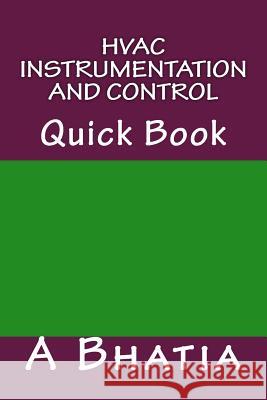HVAC Instrumentation and Control: Quick Book » książka
HVAC Instrumentation and Control: Quick Book
ISBN-13: 9781505294156 / Angielski / Miękka / 2014 / 136 str.
The HVAC systems are designed for peak conditions. Because these conditions prevail only for small period in a year, the HVAC equipment must operate most of the time at lean capacity. The function of the control system is to adjust the equipment capacity to match the load. Automatic controls are necessary not only to achieve the design conditions in the conditioned space but are also required for efficient operation of the HVAC system. The main parameters to be controlled in air conditioning system are temperature, pressure, humidity, air quality and thermal energy distribution. This 6 -hour quick book covers the basic control fundamentals of automatic controls in the HVAC system. Emphasis is placed on the control principles, terminology, basic components, control devices and direct digital control systems. Numerous illustrations and examples have been included to enhance the understanding of the course material. This course is aimed at the personnel who have some limited background in the air conditioning field or who may be having difficulty relating controls to air-conditioning equipment. The course is suitable for students, mechanical, electrical, controls and HVAC engineers, architects, building designers, contractors, estimators, energy auditors and facility managers. The book includes a multiple type quiz (30 questions) at the end. Learning Objective At the conclusion of this course, the student should be able to: Define the basic blocks of control system; Distinguish between open loop and closed loop systems; Describe different types of temperature, humidity, pressure and flow sensors; Define setpoint, control point, offset and throttling range; Determine controller action for given the application; Distinguish between direct and reverse reset; Distinguish between the mixing and diverting valves; Define flow coefficient, valve authority, controllability, rangeability and turndown ratio; Describe the sizing of control valves; Define proportional control, PI control and PID control; Describe direct digital control terminology, hardware and control network; Cite the energy saving benefits of DDC systems."
Zawartość książki może nie spełniać oczekiwań – reklamacje nie obejmują treści, która mogła nie być redakcyjnie ani merytorycznie opracowana.











